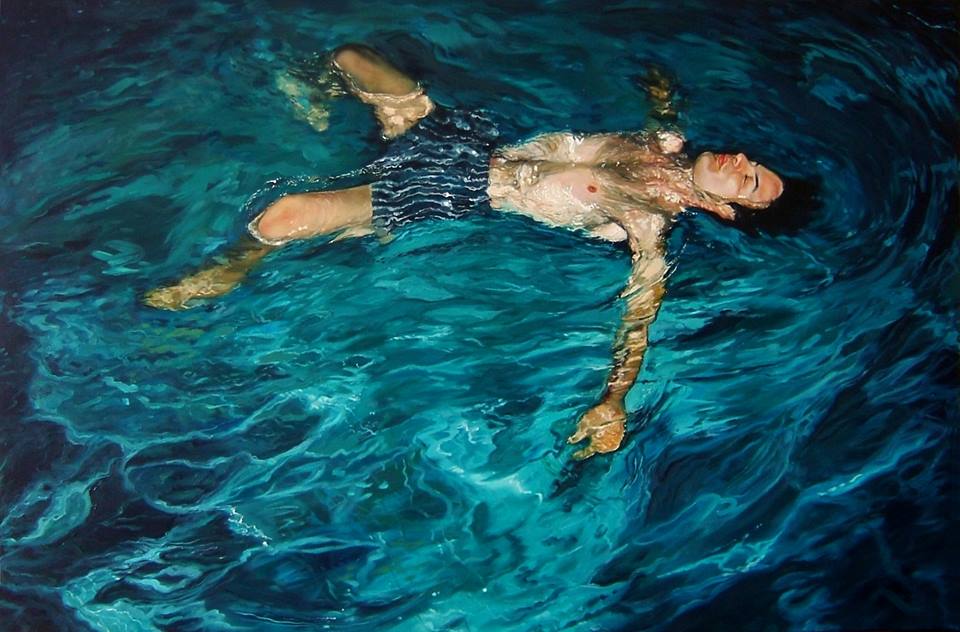AUTHOR: IVO MARTINS
EDITION: (Catalogue) Centro Cultural Vila Flor DATE: January 2014
The act of painting is also an act of courage and humility. Throughout a century unsettled by two world wars and
marked by effulgent artistic manifestations, great technological advances, several revolutions and other political,
social and life-style changes, we witnessed the almost absolute imposition of an avant-garde attitude proclaiming
at any price the “new” as the ultimate artistic value.
For many decades, figurative painting has been relatively neglected and underrated, and sometimes it is regarded
almost as a sort of archeological patrimony, as a memory from a remote and glorious age that will not happen
again in art’s history. Nowadays, the prevailing notions in art are the urge to innovate and the impulse to
conceptualize and intellectualize the “new”. With a few honorable exceptions, this trend has the effect of
confining the artist who is committed to figurative art and refuses to be an accomplice of the tyranny of
contemporary imagery to a kind of obscurity. The oldest and most historically significant artistic practices are
therefore disregarded in favor of multidisciplinary and technological aesthetical approaches, in which the
present is only effectively inscribed within the real world’s surface if it is in collision with the past.
In the midst of an artistic reality subjugated to the nihilism of a society based on the mass-media, one can’t help
but notice the prevalence of a system ruled by competitive markets that deifies the artist-star - a hostile context
for the survival of practices such as painting.
Painting requires a slower rhythm of production, and an adequate time span between the beginning and the
conclusion of the work. The artist willing to step into the slippery and fugacious territories of a mediacracy,
characterized by the commodification of the spaces of artistic performance, and showing the ambition to seek
and explore sublime moments of life’s celebration, will barely be able to resist the exquisite feeling of déjà vu that
renders everything standard and uniform.
To work and to meditate upon solitude or pain, the energy of thought or freedom, delusion or despair, love or
deception, the cruelty of nature or the elation of its vitality, boredom and anger, requires a specific propensity to
accept the difficulty of encoding themes such as these in art’s language.
The present of any work of art reckons simultaneously upon two temporal strata - the past and the future -, and
thus its surface of identity is only fully grasped when one goes through these two places and is capable of putting
his work in the perspective of the formerwhile, and of establishing a connection with the latter.
For the painter, there is a high probability of failing in his effort to, as Lévi-Strauss says, “reinvent a craft
considered to be obsolete”. Today, the artist who chooses to paint deserves praise because he accepts the
distresses and the perils inherent to that kind of artistic practice.
The work of Arlindo Silva is in line with a timeless artistic tradition. The painter manipulates concrete materials
over a flat surface - the canvas - and inscribes the facts of his personal universe, proposing a hypothesis of
intelligibility within the sensitive territory of the painting.
His work has not yet acquired the public and critical recognition it deserves. Therefore this exhibition, which
assembles a significant number of his paintings with no retrospective intention, aims to fill an obvious gap in the
Portuguese artistic landscape.
The paintings of Arlindo Silva: people of his circle of acquaintances captured in unexpected snapshots, anti-
portraits that refuse the formalism of the “pose” present in more classical portrait painting, and in which
pervades a discreet and unpretentious attitude that is also present in the artist’s personality and artistic identity.
His work is honest; its most recognizable features are the truthfulness of the body’s dispositions and movements,
which timidly disclose their moods and states of mind - glances, grimaces, smiles, tension, rapture and frenzy -
warning us that we are stepping inside a narrative and a plot.
The absence of any trace of strict formalism evokes in the observer the feeling that the strength of the paintings
comes from the fact that they break up with all the routines by capturing the unexpected side of the moments
portrayed, thus embodying a propensity for a deconstruction of the figurative practice which dissects the symbols
and rituals of everyday’s life and from which irradiates a sort of kinetic energy between real situations and the
words we imagine being spoken in them.
The tension and the strain inscribed in the faces and bodies of the people depicted, usually framed in a dark
scenario of undefined location, blend with the references of a visually represented reality, conveying sensations of
divestiture and seclusion to the observer. Although the way the artist exhibits them is almost always excessive and
hyperbolic, the moments of social interaction depicted end up revealing the opposite of this: an inevitable feeling
of abandonment and solitude.
The fairer eulogy one can make to the work of Arlindo Silva is to assert that it evokes the purity of pictorial
representation, without ever resorting to artifices or gimmicks, and that it has the effect of widening the space for
a significant and self-conscious artistic performance, built upon the primordial connections between the beauty
of what we see, what we do and what we say.
TRANSLATION: MANUEL NETO

